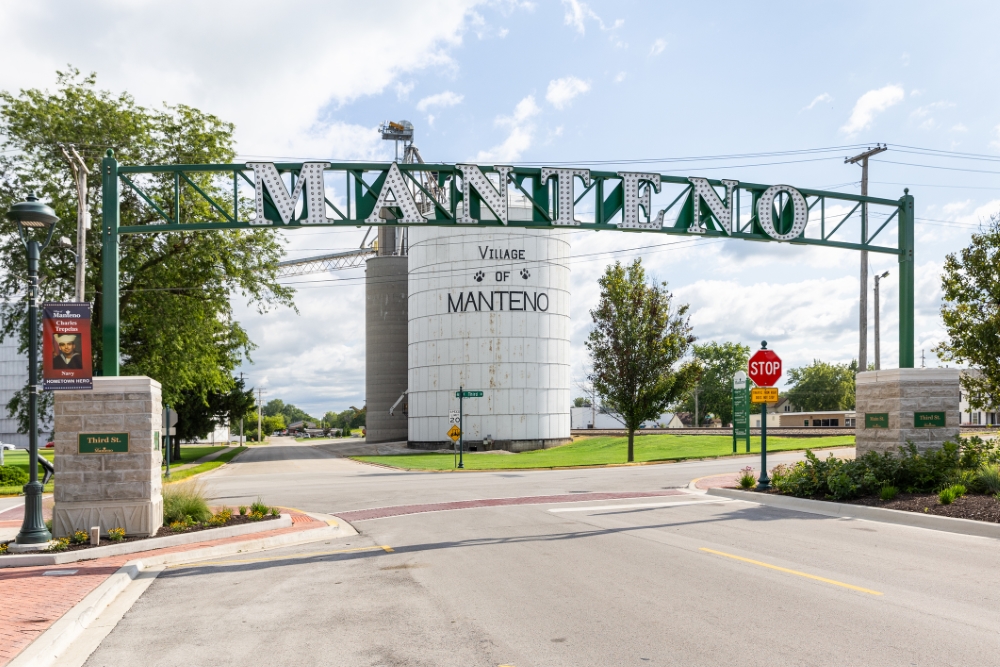
Meeting people where they live and genuinely listening to their concerns is one way to address NIMBYism before it snowballs in opposition to a project.
Photo by Adam Bruns
By Ben Sheidler, Principal, Cornerstone Government Affairs
I’ve been in the room when a company’s leaders met with a state’s economic developers to plan a flashy, scripted news conference announcing the latest and greatest manufacturing project. And I’ve been in a small county courthouse two weeks later, where an angry crowd of citizens held handmade signs saying, “We don’t want this here.”
That’s the tension we live with as America tries to rebuild its manufacturing base. We want to build more things here. But we haven’t gotten comfortable with the reality that “here” means someone’s hometown. Often, that hometown is a rural community that’s heard promises before, only to be let down, and is in no rush to believe another one.
We chant “USA!” at rallies at the mention of bringing manufacturing jobs back. But the strain of populism coursing through the nation’s political veins inevitably clashes with the patriotic promises of onshoring in America. The common refrain goes something like this: “We’re not against [insert industry facility here]. We just don’t think this is the right place for it.”
And when local government sees the angry mobs of citizens in their meetings, get ready. The political support your project enjoyed is about to disappear. Local elected officials love recruiting new companies and industries to their areas for all the right reasons. But when it gets challenging in public, they often run for the hills.
The goal is to avoid that. If you’re in public relations or in an industry seeking to build more facilities in America: your job is not just media statements and stakeholder maps on a slide deck. It’s showing up.
Early.
In person.
In places where you might not have cell service, let alone a Starbucks.
Too many PR teams and corporate leaders want to manage these projects from a browser window. They build stakeholder lists in spreadsheets, draft Q&As and wait for the site plan to go public before they start engaging.
That’s a mistake.
Every community in America can organize on digital platforms in a matter of hours. If you haven’t already started building real trust by the time the project becomes public, you’re too late.
Once the organizing on digital platforms begins, the rumor mill takes over. The narrative begins to be written by people who have no obligation to accuracy or fairness. At that point, you’re not shaping perception — you’re chasing it. And you’ll find yourself spending way too much time explaining to your CEO why watching every comment on social media is not a productive use of their time.
If you haven’t already started building real trust by the time the project becomes public, you’re too late.
That’s not to say sentiment on social media or digital platforms should be ignored. They’re a decent barometer for public sentiment and one way to take the community’s temperature and understand where the pressure points are. But digital platforms are not where the hard work gets done. The hard work happens face to face — in someone’s kitchen, in the back room of a hardware store, at the VFW on a Tuesday night. That’s where trust is built. That’s where you move the needle.
Stakeholder engagement isn’t a line item. It means driving three hours to a town you’ve never heard of and sitting down with people who don’t trust outsiders. Listening before talking. Taking notes. Coming back the next week. And the one after that.
And when you come back, it is important that you have solved the problem the stakeholder raised. This demonstrates active listening and a deep desire to be a part of the solution.
It takes grit, and it takes vulnerability. Company representatives must be willing to stand in a room where no one is smiling or clapping. To authentically represent your company and admit you’re still figuring things out. To answer the hard questions with honesty — and to say “I don’t know, but I’ll find out” when that’s the truth.
I’ve seen this done well. In one Southern town, a local pastor became the unlikely validator for a large auto manufacturing facility. His congregation was primarily composed of working-class residents who felt overlooked and underemployed. He understood the project’s economic potential, but more importantly, he understood what his silence would signal. So, he spoke up at a public meeting, in his own words. Nothing flashy. Just the conviction that his community deserved a shot at meaningful work. That simple statement broke the ice. It showed people it was OK to be in favor of the project. And not long after, the tone of community sentiment seemed to shift for the better.
That moment didn’t come from a media plan. It came from months of groundwork and local networking. Quiet conversations. Honest listening. A willingness to engage people on their terms, not yours.

While a battery manufacturing plant from China-based Gotion has met fierce opposition in a small town in Michigan, the only stop signs the company has encountered with its $2 billion plans in Manteno, Illinois, are the ones downtown.
Photo by Joe Hendrickson: Getty Images
If you’re advising a CEO (or you are a CEO) looking for where and how to build, and you’re not asking who the five most trusted people in town are, you’re missing the point. If your engagement plan doesn’t include sitting with them before you file a permit, don’t be surprised when you’re met with hostility at the first zoning hearing.
You can’t out-press-release NIMBY opposition. You have to out-relationship it.
The objections you’ll hear — traffic, water usage, crime, school overcrowding, change to community character — aren’t always rooted in facts. But they’re real to the people raising them. Those objections don’t go away because you throw jobs and tax revenue into a slideshow. They go away when you show your company is serious about being a neighbor, not just an employer.
Company representatives must be willing to stand in a room where no one is smiling or clapping.
We’ve seen companies do this right. They identify and engage stakeholders early. They develop mitigation plans before concerns are raised. They consistently show their faces in the community, not just when they need something. And they elevate local voices who are respected enough to say, “This isn’t perfect, but it’s good and it’s worth it.”
That’s how you win permission to build. Not with a billboard. With trust.
The U.S. wants to reshore its supply chains, reindustrialize and lead in the industries of the future. But we won’t get there if every groundbreaking turns into a battleground. Communications professionals and company leaders must stop treating community relations as a cleanup duty and start treating it as the core strategic function it is.
You want to do meaningful work in this space? Pack your bag. Get on the road. Find the local diner, sit at the counter and listen more than you talk.
If we want to build things in America, we’ve got to start by earning our place in the backyard.

Ben Sheidler is a veteran communications strategist with deep experience in crisis, policy and reputation management. At Cornerstone Government Affairs, he helps clients navigate complex communications challenges — particularly around high-profile economic development projects like EV facilities, data centers and agricultural operations.